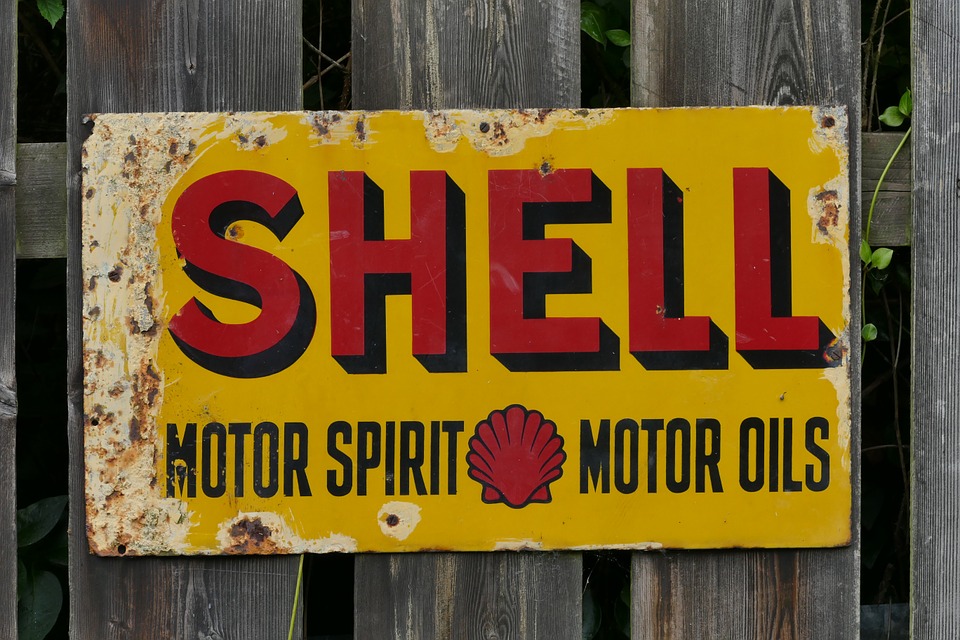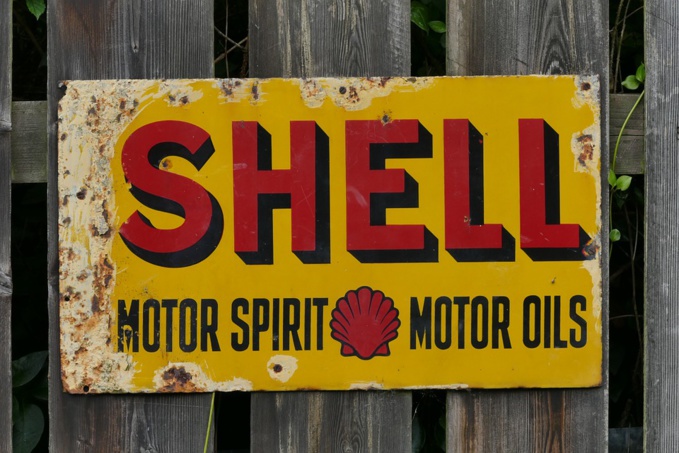Journalists of the WSJ subtracted amount of dividends and capital expenditures of companies from their operating cash flow to calculate their free cash flow, that is, amount of cash remaining after the expenses. The listed four companies did not have enough cash within a year, although Exxon Mobil said that it went to breakeven according to its own standards, without taking into account dividends. In addition, all companies have increased their debt burden over the past year.
The situation in the companies is improving. For example, Shell and Exxon announced growth of quarterly results at the end of last year. However, analysts point to possible problems in the future as oil prices are fluctuating around $ 50 per barrel.
BP needs $ 60 per barrel in order to maintain a balance of operating revenues and capital expenditures and dividends. Sale of assets will allow Chevron lead a quiet life with $ 50 a barrel. According to investment bank Jefferies, Shell and Exxon need oil prices to stay above $ 50 per barrel to maintain breakeven. The companies themselves do not disclose these data.
The oil giants used to be considered money-printing machines. Now their financial problems proved that they were not prepared for the collapse of oil prices. The companies kept the dividend rate as high as when the oil price was above $ 100 per barrel, and so they were forced to get into debt and sell assets to satisfy their shareholders.
As a result, expenses for dividends and capital investments exceeded amount of operating cash flow. Investors, then expecting stable dividends, quickly became worried, as this situation deprived the companies of opportunities for growth. Exxon, Shell and their competitors now simply need to demonstrate that they can earn enough to pay dividends.
In the past three years, the four companies have tried to convince investors that their dividends could not be threatened by anything, even with low oil prices. Companies have already tried to tighten their belts. Once the prices collapsed, they fired thousands of workers, cut spending by billions and got into debt in order to maintain the ability to pay dividends. Despite disappointing results over the past year, they said that these actions began to bear fruit.
Both Exxon and Shell managed to break even in the fourth quarter of 2016. During this period, Exxon earned $ 400 million more than it spent; Shell - $ 1.2 billion, the WSJ calculated. However, for the whole year, Exxon's spending on development of new projects and dividends by almost $ 7 billion exceeded its operating flow. For Shell, this figure was about 11 billion dollars.
Here's what Shell’s CEO Ben van Beurden said in March at CERAWeek conference in Houston: "Now we've halfway through the transformation path of the company. With an oil price around $ 60 per barrel, we are going to create a free cash flow that is twice as much as the company had in the $ 90 per barrel era".
After BP increased its breakeven level to $ 60 a barrel in February this year, the company's shares fell by about 4%. This shows that investors are still concentrating on the cash flow. "The company’s ultimate goal to get excess free cash flow", BP’s Head Bob Dudley said in March. This year the company is launching 7 new projects, 9 more are under development. By the end of the decade, they will allow BP to increase production by 800 thousand barrels a day, and this will lead to revenue growth. BP expects its break-even level to drop from $ 60 to $ 55 per barrel by the end of the year. Chevron’s Head John Watson in January told analysts that four years ago they could not even think of break-even at such moderate prices.
However, ability of companies to maintain break-even depends neither on their spending, nor on anything else but dynamics of oil prices. According to a survey conducted by the WSJ, in February, investment banks predicted that this year oil prices will average around $ 57 per barrel.
According to analysts, prices can go below this mark. This will depend on how quickly shale oil producers in the US will be increasing production and whether OPEC will extend the agreement on production freeze. Chevron’s possible break at $ 50 per barrel in part depends on how much will the company earn from sale of assets. Shell expects to sell assets by $ 30 billion next year and channel funds for debt reduction.
At the end of 2016, total net debt of the four companies amounted to 186.3 billion US dollars. Even Exxon, the world's largest public oil company, shows some signs of weakening. Earlier this year, the company wrote off more than $ 2 billion in assets and reduced its stock assessment in accordance with rules of the Securities and Exchange Commission. The company completed 2016 with a net debt of $ 39.1 billion - the highest in the company's history. Nevertheless, Exxon said that its financial position is still more stable than that of its competitors.
source: wsj.com
The situation in the companies is improving. For example, Shell and Exxon announced growth of quarterly results at the end of last year. However, analysts point to possible problems in the future as oil prices are fluctuating around $ 50 per barrel.
BP needs $ 60 per barrel in order to maintain a balance of operating revenues and capital expenditures and dividends. Sale of assets will allow Chevron lead a quiet life with $ 50 a barrel. According to investment bank Jefferies, Shell and Exxon need oil prices to stay above $ 50 per barrel to maintain breakeven. The companies themselves do not disclose these data.
The oil giants used to be considered money-printing machines. Now their financial problems proved that they were not prepared for the collapse of oil prices. The companies kept the dividend rate as high as when the oil price was above $ 100 per barrel, and so they were forced to get into debt and sell assets to satisfy their shareholders.
As a result, expenses for dividends and capital investments exceeded amount of operating cash flow. Investors, then expecting stable dividends, quickly became worried, as this situation deprived the companies of opportunities for growth. Exxon, Shell and their competitors now simply need to demonstrate that they can earn enough to pay dividends.
In the past three years, the four companies have tried to convince investors that their dividends could not be threatened by anything, even with low oil prices. Companies have already tried to tighten their belts. Once the prices collapsed, they fired thousands of workers, cut spending by billions and got into debt in order to maintain the ability to pay dividends. Despite disappointing results over the past year, they said that these actions began to bear fruit.
Both Exxon and Shell managed to break even in the fourth quarter of 2016. During this period, Exxon earned $ 400 million more than it spent; Shell - $ 1.2 billion, the WSJ calculated. However, for the whole year, Exxon's spending on development of new projects and dividends by almost $ 7 billion exceeded its operating flow. For Shell, this figure was about 11 billion dollars.
Here's what Shell’s CEO Ben van Beurden said in March at CERAWeek conference in Houston: "Now we've halfway through the transformation path of the company. With an oil price around $ 60 per barrel, we are going to create a free cash flow that is twice as much as the company had in the $ 90 per barrel era".
After BP increased its breakeven level to $ 60 a barrel in February this year, the company's shares fell by about 4%. This shows that investors are still concentrating on the cash flow. "The company’s ultimate goal to get excess free cash flow", BP’s Head Bob Dudley said in March. This year the company is launching 7 new projects, 9 more are under development. By the end of the decade, they will allow BP to increase production by 800 thousand barrels a day, and this will lead to revenue growth. BP expects its break-even level to drop from $ 60 to $ 55 per barrel by the end of the year. Chevron’s Head John Watson in January told analysts that four years ago they could not even think of break-even at such moderate prices.
However, ability of companies to maintain break-even depends neither on their spending, nor on anything else but dynamics of oil prices. According to a survey conducted by the WSJ, in February, investment banks predicted that this year oil prices will average around $ 57 per barrel.
According to analysts, prices can go below this mark. This will depend on how quickly shale oil producers in the US will be increasing production and whether OPEC will extend the agreement on production freeze. Chevron’s possible break at $ 50 per barrel in part depends on how much will the company earn from sale of assets. Shell expects to sell assets by $ 30 billion next year and channel funds for debt reduction.
At the end of 2016, total net debt of the four companies amounted to 186.3 billion US dollars. Even Exxon, the world's largest public oil company, shows some signs of weakening. Earlier this year, the company wrote off more than $ 2 billion in assets and reduced its stock assessment in accordance with rules of the Securities and Exchange Commission. The company completed 2016 with a net debt of $ 39.1 billion - the highest in the company's history. Nevertheless, Exxon said that its financial position is still more stable than that of its competitors.
source: wsj.com



















